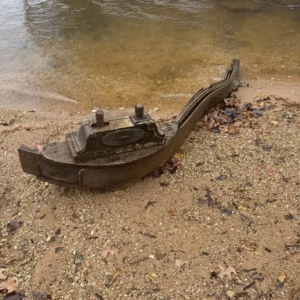9 Common Types of Body Acne — and What They May Be Telling You About Your Skin
Body acne affects millions of people of all ages. From tiny bumps on the arms to painful cysts on the back, these breakouts often signal more than clogged pores — they can reflect stress, lifestyle habits, or hormonal changes. Understanding what each type means is the first step toward healing both your skin and your confidence.
- Face Acne
This is the most familiar type, often caused by oil buildup, makeup residue, or fluctuating hormones. Stress, poor sleep, or diet high in sugar and dairy can make it worse.
What helps: Wash your face twice daily with a mild cleanser, avoid over-scrubbing, and use non-comedogenic skincare products. - Neck Acne
Neck breakouts often come from sweat, friction, or residue from hair products. Collars, scarves, and long hair can trap bacteria against the skin.
What helps: Keep the neck clean, change pillowcases often, and tie back hair when sleeping or exercising. - Chest Acne
This area is prone to “sweat acne” caused by tight clothing or unwashed gym wear. Detergent buildup and body oils can also clog pores.
What helps: Shower soon after workouts and wear breathable cotton fabrics. A gentle salicylic-acid body wash can help prevent future breakouts. - Back Acne (“Bacne”)
Back acne tends to be more painful and inflamed due to thicker skin and deeper oil glands. It’s often linked to excess sweat, friction from backpacks, or hormonal imbalances.
What helps: Exfoliate weekly with a mild scrub or glycolic acid wash and rinse shampoo thoroughly to prevent residue from running down your back. - Shoulder Acne
Common among athletes and those who carry bags frequently. Constant friction and trapped moisture make this area vulnerable.
What helps: Avoid tight straps and synthetic fabrics. Tea tree oil and zinc-based lotions may calm inflammation. - Arm Acne (or Keratosis Pilaris)
Those tiny bumps on your upper arms might not be acne at all — but keratosis pilaris, a buildup of keratin around hair follicles.
What helps: Moisturize daily with creams containing urea or lactic acid. Gentle exfoliation keeps the area smooth over time. - Buttocks Acne
Breakouts here are often caused by folliculitis — inflammation of hair follicles due to friction or tight clothing.
What helps: Wear loose, breathable underwear and cleanse the area with antibacterial soap. Sitting on hard surfaces for long periods can also worsen irritation. - Thigh and Groin Acne
Heat, humidity, and friction between the thighs can create painful red bumps that look like acne but may be a mild infection.
What helps: Use baby powder or anti-chafing creams to reduce friction, and wear airy, cotton underwear to keep the area dry. - Scalp and Hairline Acne
Small pimples along the hairline can appear when shampoo or styling products clog pores.
What helps: Rinse thoroughly after washing hair and occasionally use a clarifying shampoo to remove product buildup.
When to Seek Medical Help
Occasional breakouts are normal, but if you notice persistent, painful, or cystic acne, it’s worth visiting a dermatologist. Severe cases may need prescription creams, antibiotics, or hormone therapy to prevent scarring.
The Takeaway
Body acne isn’t a reflection of poor hygiene — it’s your skin’s way of communicating imbalance. With patience, proper care, and consistent routines, clear skin is possible.
Remember: your worth isn’t defined by your skin. Healing starts when you treat your body with kindness, not criticism.





